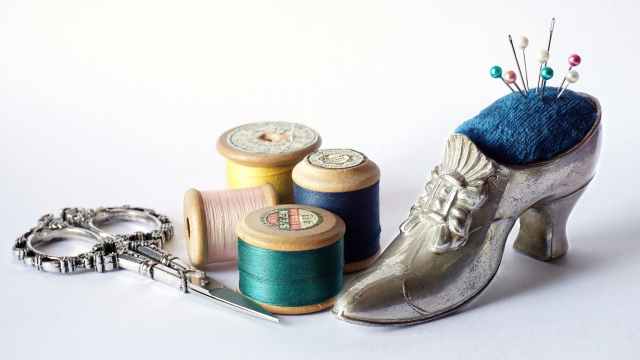Your cart is currently empty!

How to Build a Rotating Canned Food Shelf
How to Build a Rotating Canned Food Shelf from wikiHow – The How to Manual That You Can Edit Storing canned food in your kitchen cabinets is an inefficient use of space and you will often find old cans in the back. This easy-to-build shelf system will solve the problem by rotating the cans. The…

How to Build a Rotating Canned Food Shelf
from wikiHow – The How to Manual That You Can Edit
Storing canned food in your kitchen cabinets is an inefficient use of space and you will often find old cans in the back. This easy-to-build shelf system will solve the problem by rotating the cans. The cost is a small fraction of the price of retail canned food systems. There are many variations so modify the plans to suit your needs and abilities.
Steps
- Decide the size and number of shelves you need. This article will cover a 5-shelf system that is 32in wide, 24in deep, and 64in tall.
- Cut the plywood on a table saw or with a circular saw.
- Cut one full sheet in half length-wise. From each half, cut a shelf at 32in. (should leave 64in for the sides).
- Cut the other full sheet in half length-wise also. Cut each half in thirds at 32in each.
- Cut the half-sheet of plywood at 32in. Cut the 32×48 piece in half (24×32). Set the remaining 16×48 piece aside for later. You should have 2-24×64 and 10-24×32.
- Using a router and straight edge, route slots into the sides 3/4in. wide and 1/4in. deep.(An alternative is to attach rails that the shelves will rest on. The slot method is stronger and will not interfere with the rolling cans.)
- The shelves need to have a 1:12 slope (1in. drop for each 12in. run).
- For standard cans, the distance from the top of the input shelf to the top of the corresponding output shelf is 8in.
- For standard cans, the distance from the top of the input shelf, to the top of the next output shelf is 4in.
- For standard cans, the input shelf is 3.5in shorter than the output shelf.
- For larger cans, add 1 inch to these dimensions.
- Draw outlines for all slots.
- Trim the shelves. The finished outside width of the shelf system will be 32in. The shelves will fit in a slot 1/4in deep. Therefore, the width of the shelves is actually 31in. Each input shelf also needs to be trimmed on the back to allow a space for the can to drop. For standard cans, this gap needs to be 3.5in.
- Lay one side flat on the ground with the slots facing up. Insert the shelves into the slots and place the other side on top.
- Drive 2in. screws through the side and into the edge of the shelf. Put two screws in each shelf.
- Turn the unit over and drive screws in this side also.
- Turn the unit over so the back is facing up. Attach the pieces that were cut from the input shelves to prevent the cans from falling off the back.
- From the 16×48 scrap plywood, cut 5 pieces 2x32in. Turn the unit over so the front is facing up. Attach the 2x32in. pieces to block the cans from falling out the front.
- With the remaining plywood and/or additional scrap you have laying around, build a base that the casters will attach to. Stand the unit upright and attach it to the base.
- Decide the configuration of cans that you need. Each row will need to be about 1/2in wider than the can. On the table saw, rip 1/4in-wide strips from plywood, MDF, or dimensional lumber. MDF and lumber work best. Attach them to the shelves with wood glue.
- One problem you may have is the cans getting mis-aligned when they drop down.
- A solution for this is to add a divider connecting the row dividing strips, filling the gap. Cut cardboard in a trapezoidal shape to fit over the two row dividers. Cut out the center material of the cardboard and glue the flaps to the row dividers.
- Another problem occurs when the gap is too large for the cans. The can can get blocked, preventing other cans from dropping down.
- A solution for this problem is to glue wedges at the back of the lower shelf. This will cause the can to roll forward before the next one locks it in. The wedges can be cut from the same material used for the row dividers. They should be large enough to move the can forward.
- The rotating canned food shelf is ready for use. Add labels to the front of each row to identify the contents and load cans in the top portion of each shelf.
Tips
- A simpler design is possible when you have easy access to the back. This allows you to load the cans in the back and they simply roll forward.
- This shelf system can accommodate any can size – even #10 cans. Just measure the diameter and length of the can and allow at least 1/2 inch clearance.
- The casters are very important. Experience has shown the mobility they add is a valuable convenience.
- The same concepts can be applied to build this shelf system fixed in a closet. Just use rails (screwed into studs) to support the shelves.
- For added stability make the base larger than the footprint of the shelf unit. The casters should provide support a couple inches in front of and behind the shelf unit.
Warnings
- Power tools can be dangerous. Be careful.
- Always wear safety glasses when operating or using any type of power tool.
Things You’ll Need
- 4 casters (3 inch)
- 2.5 sheets 3/4″ plywood
- MDF or lumber
- Wood glue
- 2 inch screws
- Table saw
- Circular saw
- Router with 3/4in bit
- Drill
Related wikiHows
- How to Build a Hidden Door Bookshelf
- How to Make Use of Dead Space Under the Stairs
- How to Organize a Cork Board
- How to Organize a Display in a China Cabinet
Article provided by wikiHow, a wiki how-to manual. Please edit this article and find author credits at the original wikiHow article on How to Build a Rotating Canned Food Shelf. All content on wikiHow can be shared under a Creative Commons license.





Leave a Reply